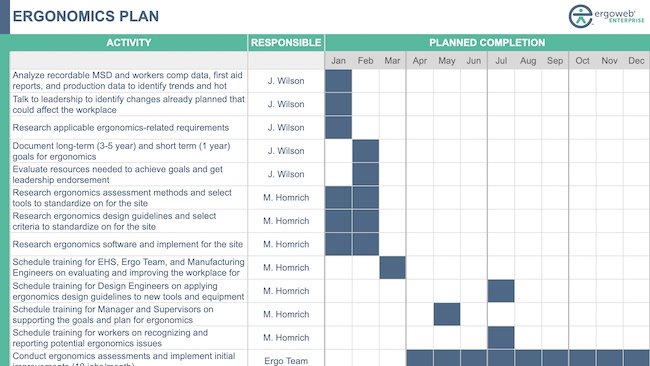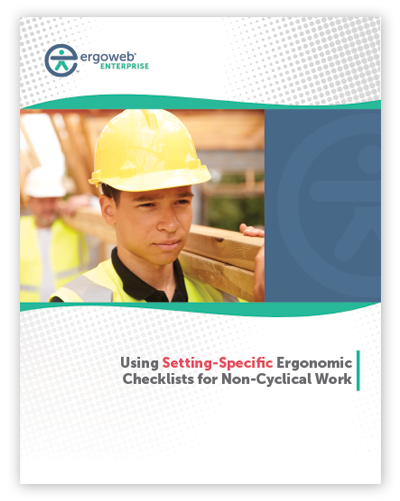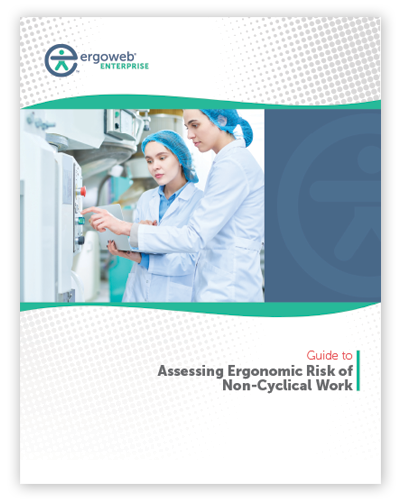Ergoweb® Learning Center
We’ve published and shared thousands of ergonomics articles and resources since 1993. Search by keyword or browse for topics of interest.
Downloadable Guides
Browse Open Access Articles
September 14, 2010
Dennis ("Denny") Ankrum, a strong contributor to the Ergoweb Community and the topic of office ergonomics in general, has passed on after a valiant battle with cancer.
September 14, 2010
The State of Washington and NIOSH share the results of a symposium that brought together private insurance carriers, insurance associations, self-insured corporations, academic institutions and government agencies. The participants learned how Workers Compensation data can be used to estimate injury magnitude, severity, cost, frequency, and trends, which can then be used to prioritize prevention.
September 9, 2010
A roundup of ergonomics topics: Is there a turf battle brewing in the field of ergonomics? Which side are you on? Plus, OSHA is taking a stand on long working hours for medical residents, and has levied a $50.6 million fine against BP -- and that's for past sins -- they haven't yet hit them for the Gulf oil spill.
September 8, 2010
Researchers tested safe patient handling training methods, including classroom and contextual (hands-on) training in both emergency and non-emergency situations. Not surprisingly, they found that contextual training is more effective than classroom training, but what are the implications for ergonomists?
August 31, 2010
Sit-to-Stand workstations for computer work are growing in popularity for many reasons, driving down cost and stimulating innovation. This article reviews key features to consider for sit-to-stand workstation design and provides examples of the current state-of-the-art options in the marketplace.
August 30, 2010
A recent RAND Corporation study of Pennsylvania firms that had state Certified Safety Committees showed mixed results in reducing company injury rates. The study found that employers that joined the CSC program did not experience a reduction in lost work time injury/illness rates when compared to similar firms who were non-CSC participants.
August 17, 2010
A survey based study of critical care nurses shows that most still manually perform patient lift and transfer tasks, creating a strikingly high level of workplace risk in relation to patient handling tasks. However, safe practices are followed when efective management characteristics are in place.
August 4, 2010
Who knew? The wholesale and retail trade sector, usually thought of as low risk industry, instead shows a higher rate of injury/illness and overexertion related disabling disorders than general private industry, according to this NIOSH analysis of Bureau of Labor Statistics data.
August 4, 2010
Guest contributor Jill Kelby reviews a tragic patient handling accident, using it as a compelling vehicle to understand obesity and other challenges that care facilities face when handling and caring for patients: "...we can't engineer out the humans in SPH. There will always be some amount of error. The goal in SPH needs to become how to get that error rate as close to zero as possible."






